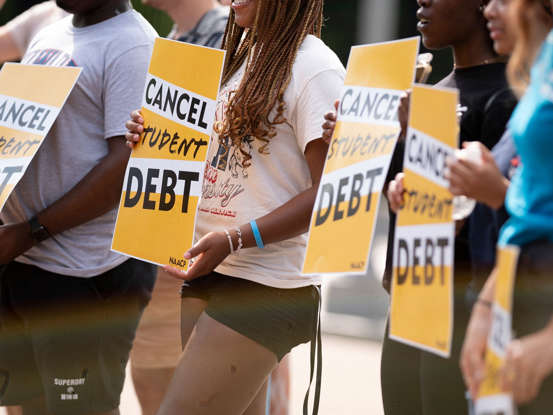PERVERSE CAPITALI$M
IBM boasts how AI can improve productivity, pays up to $260 million in ‘stranded costs’ after laying off thousandsStory by Wallace Witkowski • Yesterday
International Business Machines Corp. shares rose in the extended session Wednesday after Big Blue topped earnings estimates and software sales expectations, and played up the efficiency of its own AI, while axing thousands of jobs.
Related video: IBM Expects Strong Sales Growth in 2023 (Bloomberg)Duration 2:50 View on Watch
IBM reported first-quarter net income of $927 million, or $1.02 a share, compared with $733 million, or 82 cents a share, in the year-ago period. Adjusted earnings, which exclude stock-based compensation expenses and other items like “stranded costs,” were $1.36 a share, compared with $1.40 a share in the year-ago period.
Last quarter, IBM posted its biggest sales increase in nearly a decade, while trimming its workforce by nearly 4,000 jobs.
“In the first quarter of 2023, management initiated a workforce rebalancing action to address remaining stranded costs in the business as a result of portfolio actions taken over the last several years,” IBM said in a filing, adding that the rebalancing charges primarily included employee transition costs, severance and employee benefits. IBM reported a pre-tax charge of about $260 million in the first quarter for “stranded costs.”
IBM, which now receives about three-quarters of its revenue from tech services, reported its revenue barely rose to $14.25 billion from $14.2 billion in the year-ago quarter.
Analysts surveyed by FactSet had forecast $1.26 a share on revenue of $14.35 billion. Prior to the earnings report, one analyst had said IBM would have to turn in “nearly pristine” results to support the stock.
Prior to Wednesday’s report, Chief Executive Arvind Krishna said artificial intelligence was well on its way to replacing humans for “clerical white-collar work.” On a call with analysts, Krisha gave examples of that in IBM’s own use, and told analysts that AI is projected to add $16 trillion to the global economy by 2030.
“In digital labor, we are helping finance, accounting, and HR teams save thousands of hours by automating what used to belabor intensive data-entry tasks,” Krishna told analysts. “These productivity initiatives free up spending for reinvestment and contribute to margin expansion.”
“We’re doing that in areas like HR and talent, finance, and end-to-end processes like quote-to-cash and source-to-pay,” said James Kavanaugh, IBM’s chief financial officer, on the call. “For example, in HR, we now handle 94% of our companywide HR inquiries, speeding up the completion of many HR tasks by up to 75%.”
Read: Meta begins cutting technical jobs in latest round of layoffs
IBM reported $5.92 billion in software revenue for the first quarter, while analysts forecast $5.83 billion; $4.96 billion in consulting revenue, versus the Street’s $5 billion; and $3.1 billion in infrastructure revenue, just below the consensus $3.19 billion.
IBM said it expects revenue growth will be “neutral” for the year compared with last year’s $60.53 billion, given current exchange rates, and reiterated its forecast of $10.5 billion in FCF. Analysts were laser-focused on free-cash flow, or FCF. For the first quarter, FCF came in at $1.3 billion, while analysts expected $1.6 billion.
Analysts had estimated $2.07 a share on revenue of $15.78 billion for the second quarter, and $9.45 a share on revenue of $62.7 billion for the year. Analysts currently expect $10.45 billion in FCF for the year.
Over the past year, IBM has warned about currency headwinds because of strength in the dollar, with the U.S. Dollar Index reaching a 52-week high in mid-September. Currently, the dollar index is only up 1%, compared with 12 months ago.
IBM shares rose 3% after hours, following a 1.1% decline in the regular session to close at $126.32. Shares have slipped 2.2% over the past 12 months, and are down 10.3% year to date. Meanwhile, the Dow Jones Industrial Average which counts IBM among its 30 components, is up 2.3% year to date, while the S&P 500 index is up 8.2%, and the tech-heavy Nasdaq Composite Index has gained more than 16%.
Story by By Katie Paul and Yuvraj Malik • Yesterday

Headquarters of Facebook parent company Meta Platforms Inc in Mountain View© Thomson Reuters
(Reuters) - Meta Platforms Inc on Wednesday carried out another round of job cuts, this time hitting engineers and adjacent tech teams, as Chief Executive Mark Zuckerberg further moved to streamline the business in a bid to make 2023 a "year of efficiency."
Meta in March became the first Big Tech company to announce a second round of mass layoffs, which it said would take place in three main batches over several months and impact 10,000 employees.
Wednesday's cuts, though expected, prompted expressions of frustration from Meta employees. Layoffs were the subject of the most popular questions posted on an internal company forum on Wednesday ahead of an upcoming employee town hall.
"You've shattered the morale and confidence in leadership of many high performers who work with intensity. Why should we stay at Meta?" read one question seen by Reuters.
The question references comments Zuckerberg made last year urging employees to work with more "intensity" to meet the Facebook and Instagram parent company's business challenges.
Related video: Meta Prepares For More Layoffs Across Facebook, WhatsApp, Instagram, Say Reports | Business Lunch (CNBCTV18) Duration 1:40 View on Watch
The company declined a Reuters request for comment.
Meta's first round of layoffs in the fall hit more than 11,000 employees, or 13% of its workforce at the time, and preceded other major tech companies shedding thousands of employees after a pandemic-led boom in digital advertising and cloud computing.
With the restructuring, Meta is also shelving lower-priority projects and "flattening" layers of middle management.
Investors have rewarded the company for downsizing.
Meta shares have surged about 80% this year, outperforming the tech-heavy Nasdaq Composite's 16% rise in the period.
The company, which will announce its first-quarter results on April 26, is expected to benefit from a modest pickup in the digital advertising market and regulatory pressure on chief rival TikTok.
(Reporting by Katie Paul in New York and Yuvraj Malik in Bengaluru; Editing by Devika Syamnath and Bill Berkrot)




























